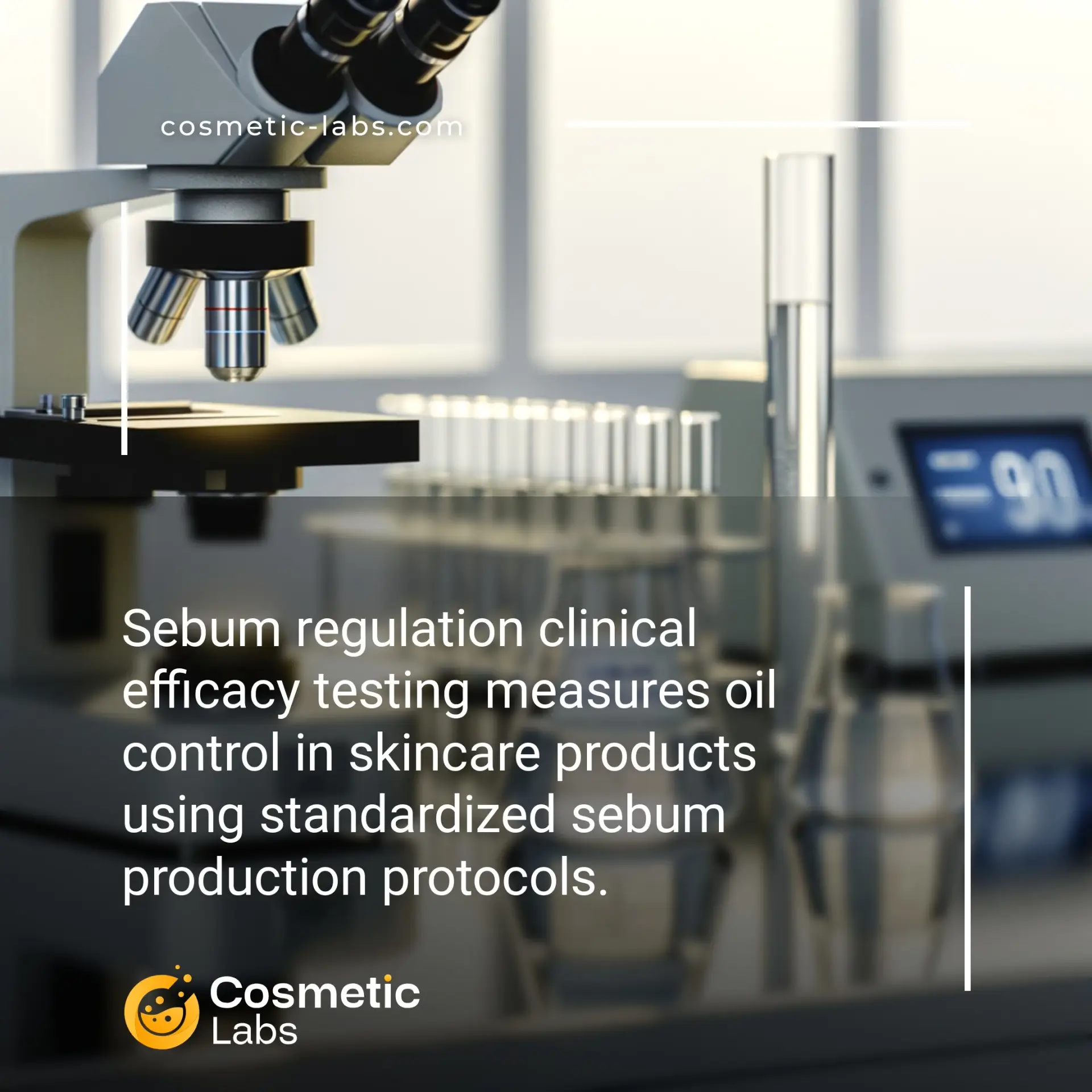Sebum Control Testing Services for Beauty Brands

What is Sebum regulation efficacy testing?
Sebum regulation clinical efficacy testing services measure how well your oil-control formulations actually reduce sebum production and skin shine in real users. Labs conduct these studies using sebotapes to collect and analyze sebum samples from volunteers over 4-8 weeks, providing quantitative data on sebum reduction percentages that support your marketing claims and regulatory submissions.
Why do you need this service?
Cosmetic labs conduct sebum production measurement studies to validate oil-control claims for mattifying foundations, pore-minimizing serums, and acne treatment products. These controlled trials measure sebum levels before and after product application using sebotapes and corneometry, delivering quantifiable data for regulatory submissions and marketing claims that satisfy FDA guidelines and consumer expectations.
Who provides Sebum regulation efficacy testing services?
All cosmetic labs providing Sebum regulation efficacy testing services
There is no company providing these services at the moment.
Sebum Regulation Clinical Efficacy Testing Services
Labs on our platform provide sebum regulation clinical efficacy testing to validate your oil-control formulations with measurable results. These studies demonstrate how effectively your products manage skin oiliness, pore appearance, and shine reduction through standardized protocols.
Sebum Production Measurement Protocols
Testing facilities use sebumeter devices and tape-stripping methods to quantify oil production before and after product application. These measurements track sebum levels on the T-zone, cheeks, and forehead over 2-8 week periods.
Standard testing includes:
- Baseline sebum measurements using photometric analysis
- Weekly sebum production tracking during product use
- Pore size evaluation through digital imaging
- Shine assessment under controlled lighting conditions
Results provide percentage reduction data you can use in marketing claims and regulatory submissions.
Clinical Study Design and Validation
Labs design controlled studies with 20-50 participants who have oily or combination skin types. Studies typically run 4-8 weeks with standardized application protocols and environmental controls.
Testing parameters include:
- Participant screening for skin type and sebum production levels
- Split-face or controlled application methodologies
- Statistical analysis of sebum reduction efficacy
- Photographic documentation of visible improvements
Connect with labs on our platform to discuss your sebum control testing requirements and timeline for your product launch.
Practical Applications of Sebum Regulation Clinical Efficacy Testing
Sebum regulation clinical efficacy testing applications provide cosmetic brands with measurable proof that their oil-control formulations deliver real results to consumers.
Anti-Acne Product Development and Claims Validation
Labs conduct sebum production measurements using sebotapes and corneometry to validate acne treatment claims. These tests track sebum levels over 4-8 week periods, measuring percentage reductions in oily T-zone areas. Product developers use this data to support marketing claims like “reduces excess oil by 40% in 28 days.”
Testing protocols include baseline measurements, twice-daily product application, and weekly sebum assessments. Labs document visible pore size reduction and skin texture improvements through digital imaging analysis.
Mattifying Cosmetic Performance Verification
Cosmetic labs test mattifying foundations, primers, and powders using controlled sebum challenge studies. Participants apply products to half their face while leaving the other half untreated as control. Labs measure shine levels using glossmeters at 2, 4, 6, and 8-hour intervals.
Results show how long products maintain oil-free appearance under normal daily conditions. Brands use this data to substantiate “12-hour shine control” or “all-day matte finish” claims on packaging.
| Testing Method | Measurement Tool | Typical Duration | Key Metrics |
|---|---|---|---|
| Sebum Production | Sebotape Analysis | 4-8 weeks | μg/cm² reduction |
| Shine Control | Glossmeter | 8-12 hours | Gloss unit decrease |
| Pore Appearance | Digital Imaging | 2-4 weeks | Pore size percentage |
Ready to validate your sebum-control formulations? Connect with experienced cosmetic labs on our platform to design testing protocols that support your product claims and regulatory requirements.
